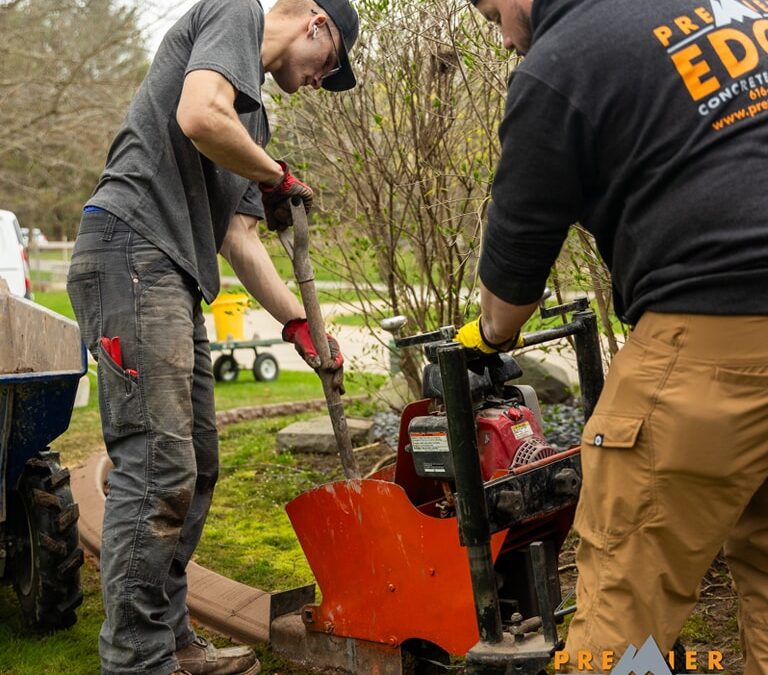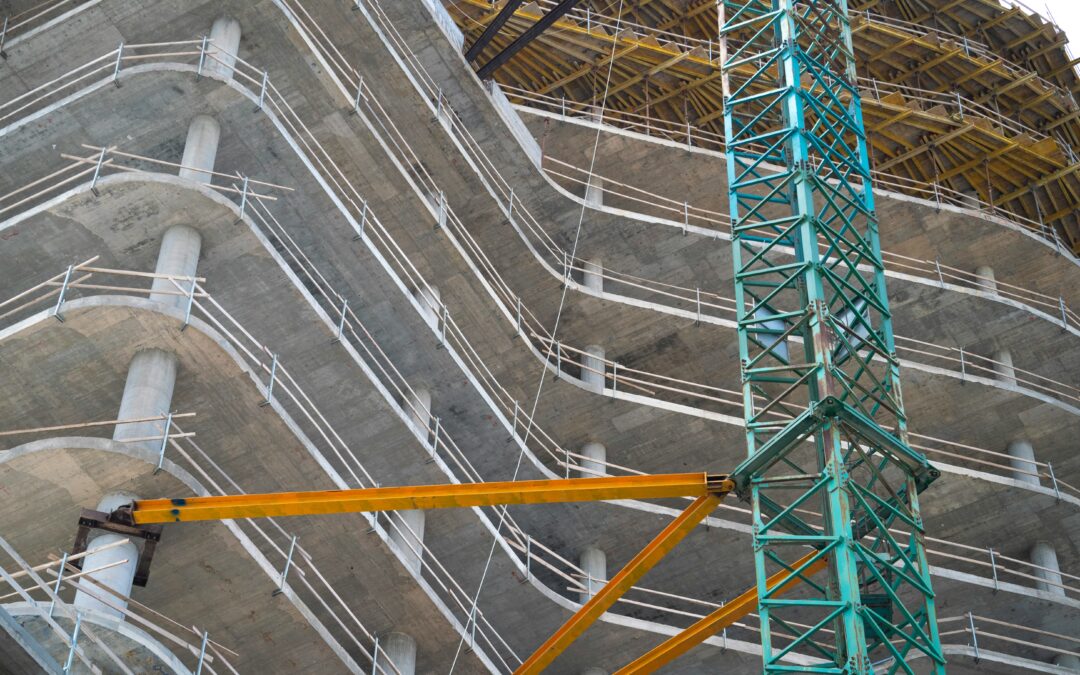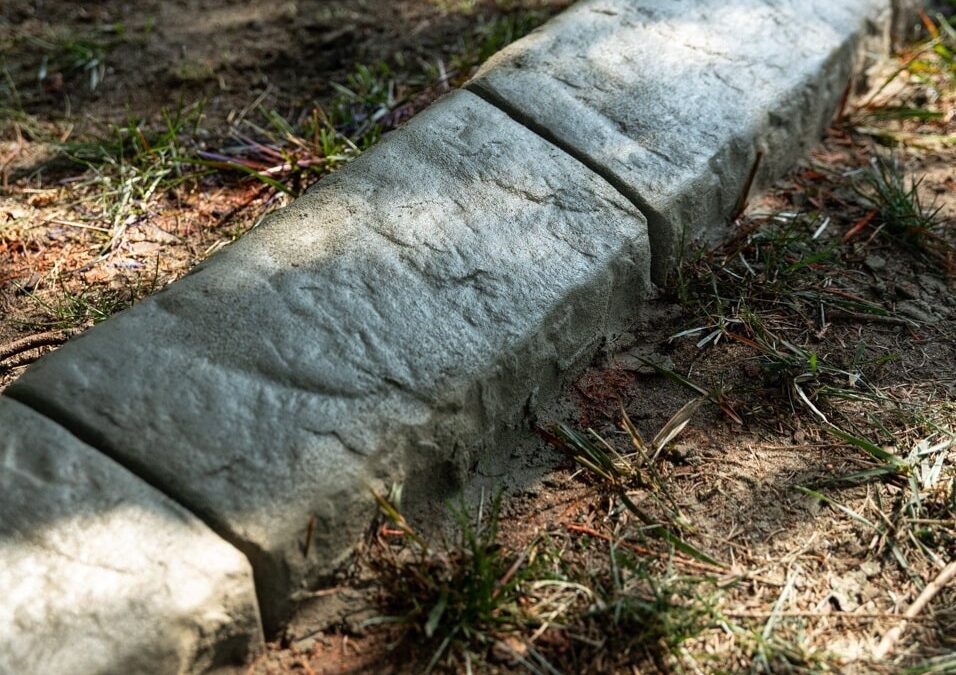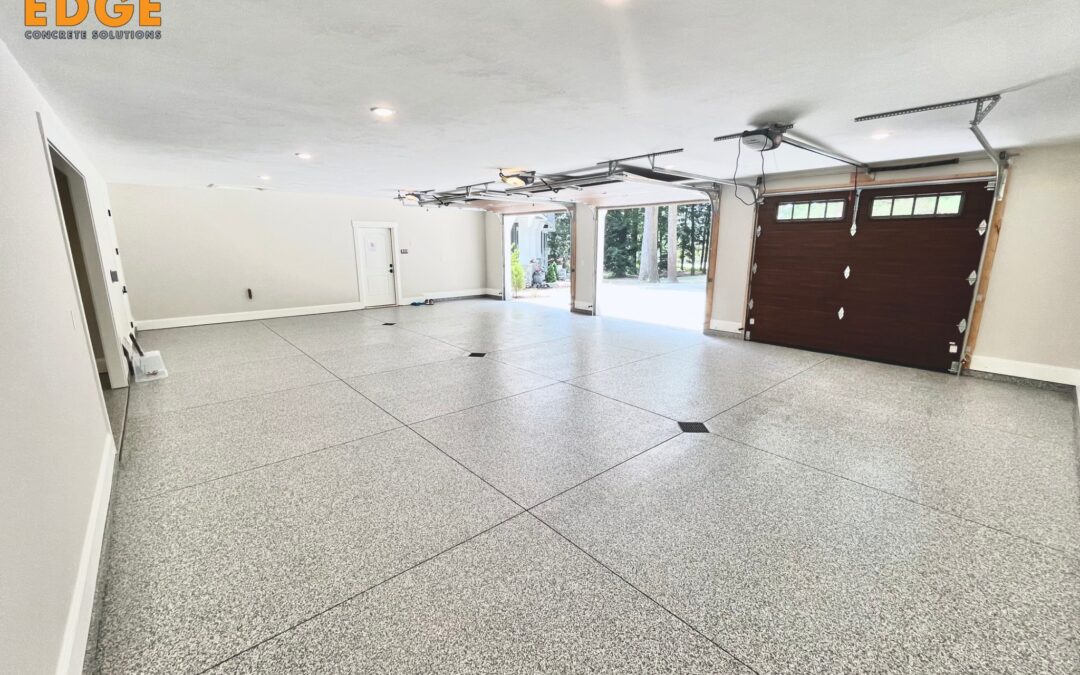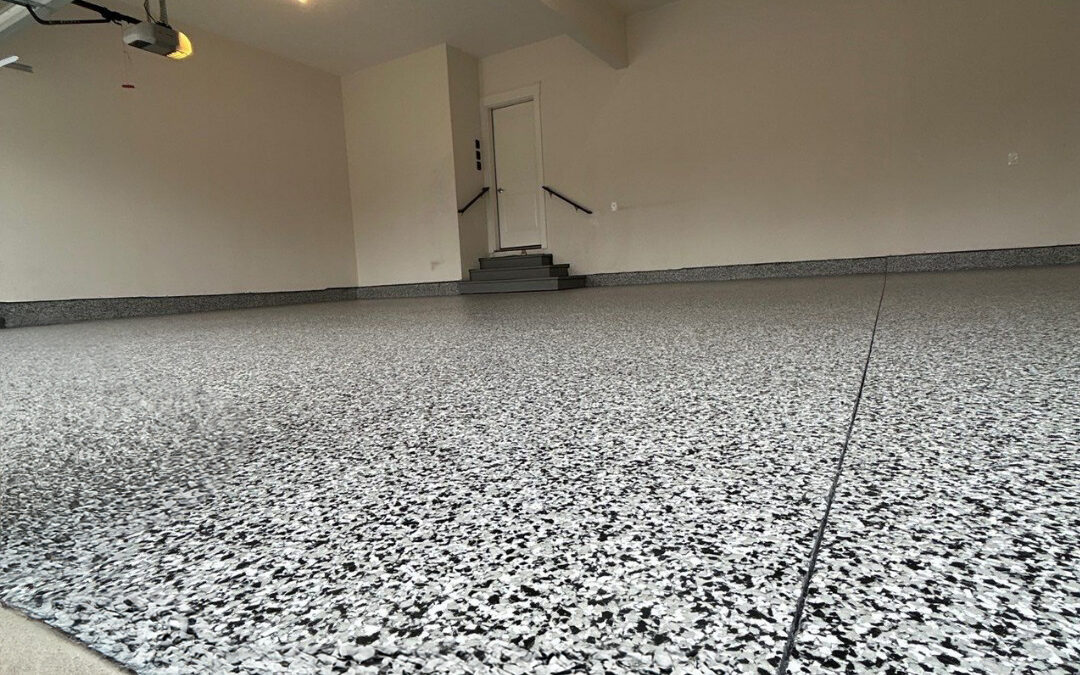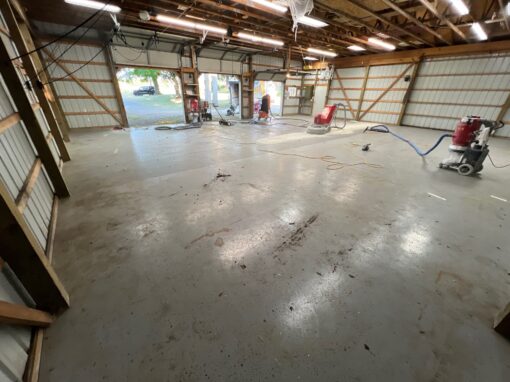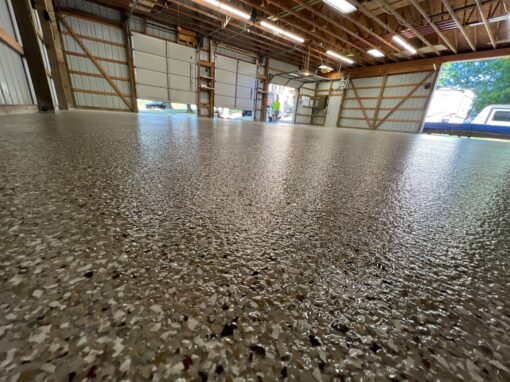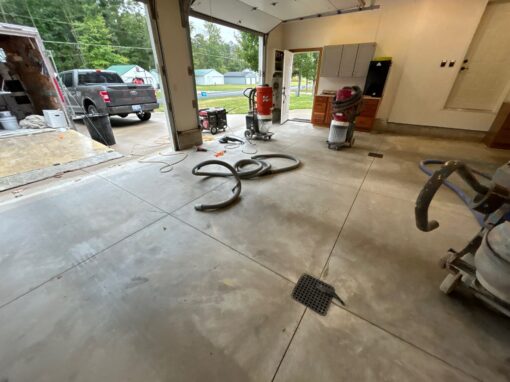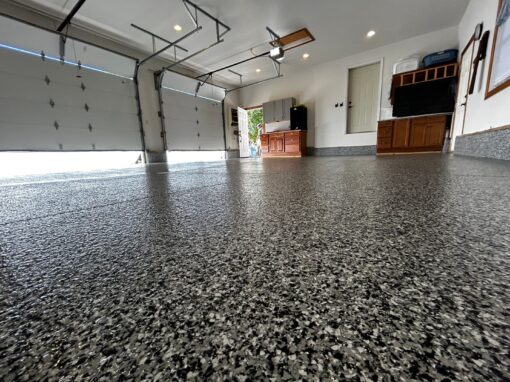If you’re looking to improve the look and functionality of your basement floor epoxy can be an excellent choice. Unlike traditional flooring materials such as tile, wood, or carpet, epoxy is a highly durable surface that can withstand heavy foot traffic. In addition to its durability, it also provides a unique aesthetic feel that will make your basement stand out from others. Epoxy is not only suitable for interior surfaces; it can also be used outdoors, on some concrete applications, and even in industrial settings. With so many benefits associated with epoxy use in basements, there’s no reason not to consider giving your basement floor an upgraded look with this innovative solution!
Benefits of Using Epoxy to Finish Your Basement Floor
When it comes to finishing your basement floor, epoxy is a versatile and durable option that offers many benefits. Not only does it provide a sleek and polished look, but it also boasts resistance to chemicals and abrasions, making it an ideal solution for high-traffic areas. Plus, epoxy is easy to clean and maintain, requiring minimal effort to keep your basement looking pristine. Additionally, it can enhance the overall safety of your space by offering slip-resistant and fire-resistant features. Moreover, epoxy installation is a relatively quick and fuss-free process that can be done in as little as a day, saving you time and hassle. And lastly, epoxy is an eco-friendly option, as it eliminates the need for harsh chemicals and excessive cleaning. In sum, utilizing epoxy to finish your basement floor is a wise investment that not only adds value to your home but also offers a range of benefits that are hard to match.
Types of Epoxy Available for Basements & How to Choose the Right One for You
Epoxy is one of the most popular solutions for basement flooring thanks to its durability and resistance to moisture. However, choosing the right type of epoxy for your basement can be a daunting task. There are several factors that you need to consider, such as the level of foot traffic, the amount of moisture in your basement, and the overall aesthetic that you want to achieve. When it comes to selecting the right type of epoxy, there are three main options to choose from water-based, solvent-based, and 100% solids. Water-based epoxy is a cost-effective and easy-to-use option that is ideal for those on a tight budget. Solvent-based epoxy, on the other hand, is more durable and resistant to chemicals, making it a great choice for industrial settings. Finally, 100% solids epoxy is the strongest and most durable option, but it is also the most expensive. To choose the right type of epoxy for your basement, you should consider your specific needs and requirements. Whether you want a low-maintenance solution or require high chemical resistance, there is an epoxy option that will meet your needs. By taking the time to understand the differences between the various types of epoxy available, you can find the perfect solution to ensure a long-lasting and beautiful finish for your basement flooring.
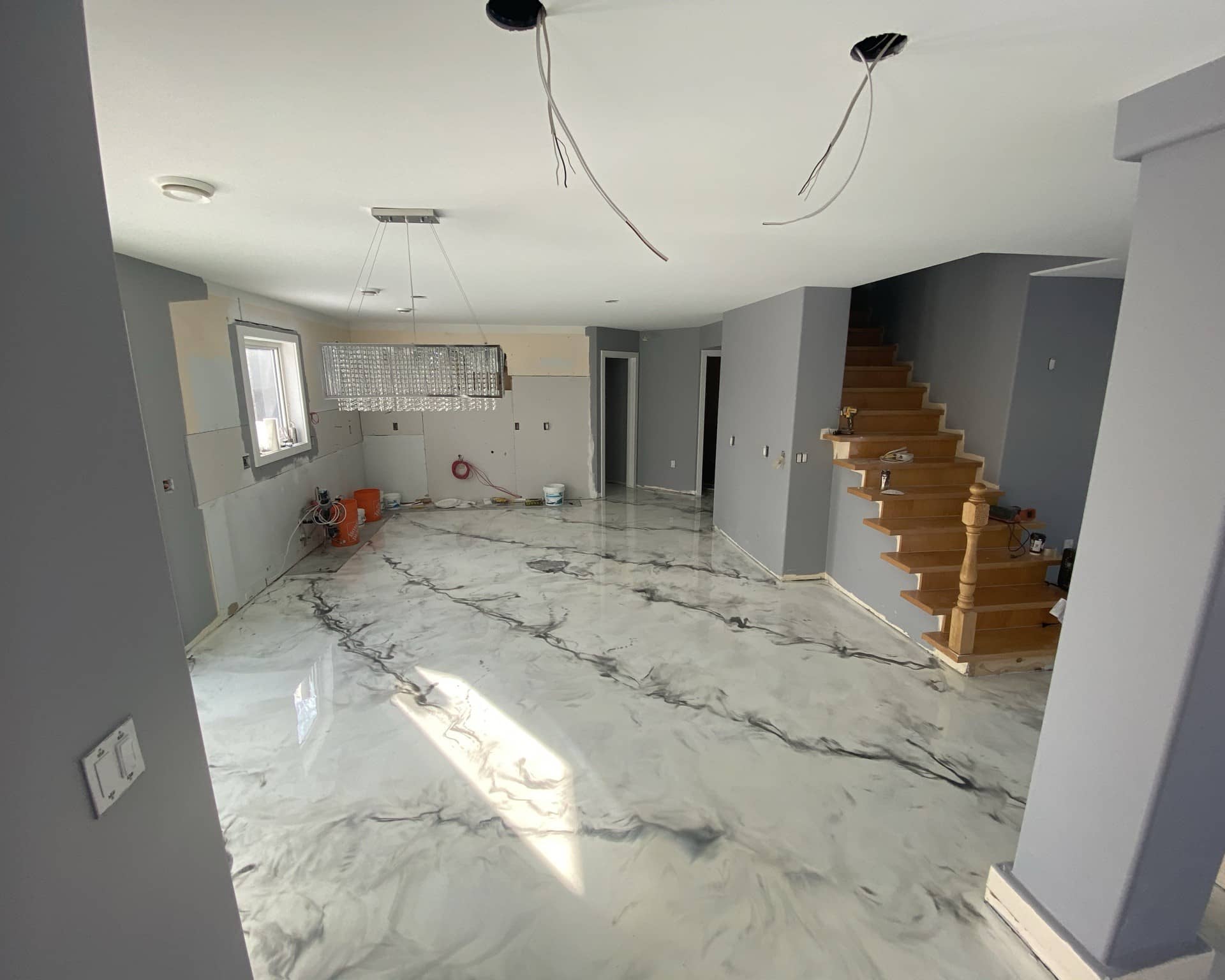
Basement Epoxy Floor Coating
Steps for Preparing Your Basement Floor Before Installing Epoxy
Preparing your basement floor before installing epoxy is an essential step for achieving a smooth and durable finish. Neglecting this step may lead to recurring issues, such as cracking, chipping, or bubbling. To start, you should thoroughly clean and degrease the surface, removing any dirt, stains, or debris. This is crucial to ensure that the epoxy adheres well to the floor and prevents the appearance of unsightly blemishes. Once cleaned, inspect for any cracks, holes, or unevenness that could compromise the integrity of the epoxy. If you find any, it’s important to repair and level the surface before applying the epoxy. Additionally, a final step, not to be overlooked, is to ensure proper ventilation during installation and adequate curing time for the epoxy. By following these steps, you’ll create a basement floor that’s durable, beautiful, and resistant to frequent wear and tear.
Tips and Tricks on Applying Epoxy to Your Basement Floor
As a professional in the flooring industry, I know all too well the challenges that homeowners face when it comes to basement floor maintenance. That’s why I want to share with you some valuable tips and tricks for applying epoxy to your basement floor. First and foremost, preparation is key. Before applying the epoxy, it is critical to ensure that the basement floor is thoroughly cleaned, free of any debris, and completely dry. This will not only ensure a smooth application, but it will also prevent any potential bond issues in the future. Additionally, it is highly recommended to test the basement floor for moisture levels prior to beginning the application process. Moisture can cause significant damage to the epoxy, resulting in bubbling and peeling. Finally, when applying epoxy, it is important to adhere to proper mixing ratios, use the appropriate tools, and follow all manufacturer instructions for maximum durability and longevity. With these tips and tricks in mind, you can confidently apply epoxy to your basement floor, creating a beautiful and durable surface that will last for years to come.
Maintenance Tips for Keeping Your Epoxy Lasting Longer
When it comes to your basement floor epoxy, proper maintenance is key in extending its lifespan and keeping it looking pristine. One essential tip for maintaining your epoxy floor is to clean it regularly using a non-abrasive cleaner, while avoiding the use of harsh chemical cleaners. Additionally, it is important to promptly clean up any spills or stains, as they can eventually cause unwavering damage to the epoxy. Moreover, ensure that you avoid heavy furniture or equipment from being dragged or moved across your epoxy floors. Instead, use furniture pads or mats to protect your floors from scratches and damage. Furthermore, maintaining a consistent temperature in your basement, away from extreme hot or cold conditions, can also help preserve the integrity of your epoxy flooring. By following these simple maintenance tips, you can ensure that your epoxy floor lasts longer, maintains a polished finish, and remains a beautiful addition to your home or commercial space.
How to Remove Any Unwanted Epoxy from Your Basement Floor
If you’re looking to restore your basement floor to its former glory, you may find yourself dealing with unwanted epoxy that is stuck on the surface. Removing epoxy can be a daunting task, but it is necessary to start the process of refinishing and repairing your floor. One of the most effective ways to remove epoxy from your basement floor is by using a professional-grade solvent. This powerful solution is specifically designed to dissolve epoxy and other types of adhesives without damaging the concrete or affecting the underlying structure. It is important to note that when using solvents, proper safety measures such as wearing protective gear and ensuring proper ventilation should be taken. With a bit of patience and the right products, you can easily and effectively remove any unwanted epoxy from your basement floor, leaving it looking clean and polished.
After considering the benefits, the types, the steps of preparation and application, as well as maintenance and removal tips associated with epoxy flooring for basements, it’s safe to say that this type of flooring is a great investment. It is easy to maintain and last much longer than other alternatives available for basement floors. With so many varieties of epoxy on the market today, you can find one that best suits your needs and budget. If you put in the proper effort from start to finish, your epoxy floor will look beautiful and last many years into the future! For help with any part of this project, make sure you contact a certified professional to ensure the best results.

Basement Epoxy Flooring
https://www.google.com/maps?cid=1810621540998150883.

I’m Nathan Endres, owner of Premier Edge Concrete Solutions. I ensure every project showcases quality and excellence. Specializing in landscape curbing and floor coatings, my team and I serve Grand Rapids, MI, with a focus on providing reliable and affordable craftsmanship.



